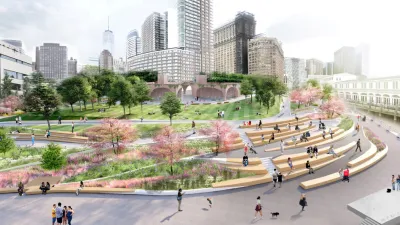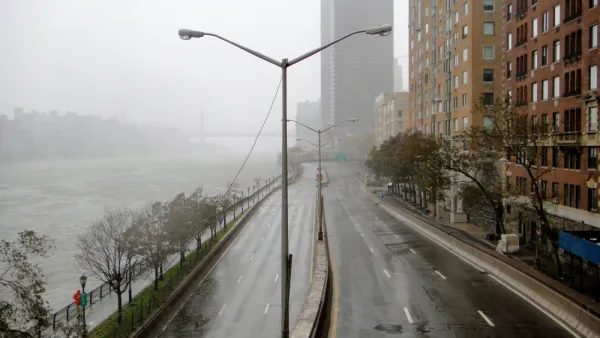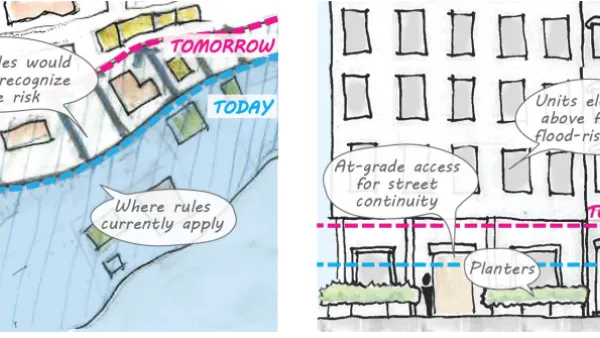A massive project underway in Lower Manhattan seeks to protect the shoreline from future flooding and mitigate the effects of climate change and rising sea levels.

Writing in Bloomberg CityLab, Patrick Sisson reports on efforts to protect Battery Park City from catastrophic flooding like the kind that devastated parts of New York during Hurricane Sandy. As Sisson writes, local residents want authorities to remember that “amid the high-rises, there’s a real neighborhood here in this low-lying area at the southern tip of Manhattan, with roughly 16,000 full-time residents and its own Little League.”
Now, the Battery Park City Resiliency Project is working to prevent similar floods and bolster the coastline against future threats. “With global design firm AECOM working as lead architect and engineer, the project amounts to a wholesale reconstruction of the already artificial Battery Park City — 92 acres created from soil and rock dug during the construction of the World Trade Center.”
The project is part of the Lower Manhattan Coastal Resiliency plan, a broader effort to protect the city in the wake of Hurricane Sandy. The article describes the various approaches that will be taken to address flood risks in different areas of the shoreline, with many of them doubling as public parks and amenities. Some areas will be protected by flood walls, while others will be built to withstand flooding with water-resistant materials and plants that can survive being submerged.
“The project is a rare exception, in many ways. The Battery Park City Authority can leverage bond funding and coordinate the endeavor in ways other local government entities can’t. It’s an example of an empowered local government entity in a wealthy neighborhood tackling rising water with immense financial resources.” But while not all communities may have the resources the Battery Park City Authority does, the project holds lessons for other climate resilience projects. “Ideally, [Thad Pawlowski, a professor and managing director at Columbia University’s Center for Resilient Cities and Landscapes] sees this raising the standard, and helping other neighborhoods — such as Red Hook in Brooklyn or Hunt’s Point in the Bronx, which don’t have Battery Park City’s resources and face some of the highest risks from climate change — demand and receive more.”
FULL STORY: Behind a Billion-Dollar Bid to Save Lower Manhattan

National Parks Layoffs Will Cause Communities to Lose Billions
Thousands of essential park workers were laid off this week, just before the busy spring break season.

Retro-silient?: America’s First “Eco-burb,” The Woodlands Turns 50
A master-planned community north of Houston offers lessons on green infrastructure and resilient design, but falls short of its founder’s lofty affordability and walkability goals.

Delivering for America Plan Will Downgrade Mail Service in at Least 49.5 Percent of Zip Codes
Republican and Democrat lawmakers criticize the plan for its disproportionate negative impact on rural communities.

Test News Post 1
This is a summary

Test News Headline 46
Test for the image on the front page.

Balancing Bombs and Butterflies: How the National Guard Protects a Rare Species
The National Guard at Fort Indiantown Gap uses GIS technology and land management strategies to balance military training with conservation efforts, ensuring the survival of the rare eastern regal fritillary butterfly.
Urban Design for Planners 1: Software Tools
This six-course series explores essential urban design concepts using open source software and equips planners with the tools they need to participate fully in the urban design process.
Planning for Universal Design
Learn the tools for implementing Universal Design in planning regulations.
EMC Planning Group, Inc.
Planetizen
Planetizen
Mpact (formerly Rail~Volution)
Great Falls Development Authority, Inc.
HUDs Office of Policy Development and Research
NYU Wagner Graduate School of Public Service





























